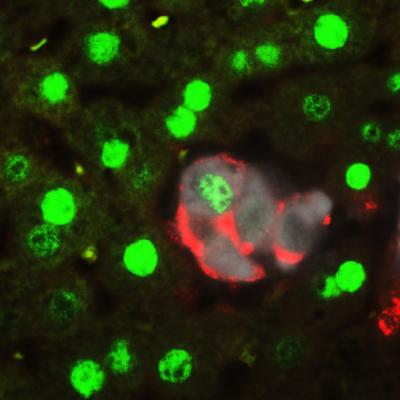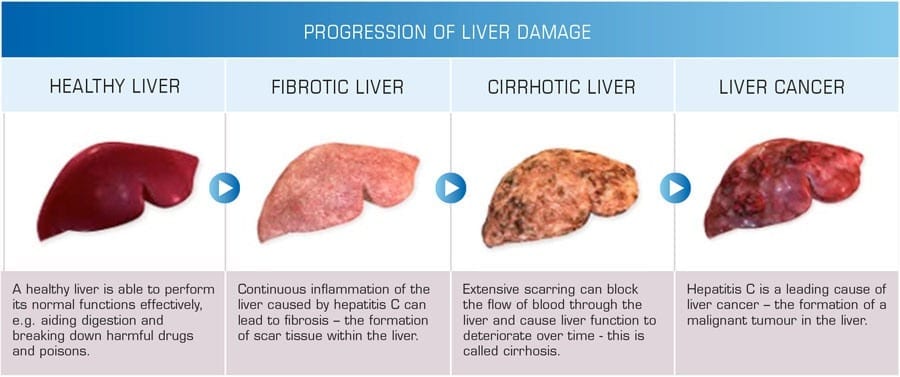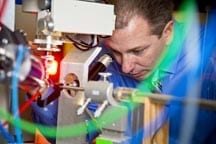
Harvard researchers find switch that causes mature liver cells to revert back to stem cell-like state
Harvard Stem Cell Institute scientists at Boston Children’s Hospital have new evidence in mice that it may be possible to repair a chronically diseased liver by forcing mature liver cells to revert back to a stem cell-like state.
The researchers, led by Fernando Camargo, PhD, happened upon this discovery while investigating whether a biochemical cascade called Hippo, which controls how big the liver grows, also affects cell fate. The unexpected answer, published in the journal Cell, is that switching off the Hippo-signaling pathway in mature liver cells generates very high rates of dedifferentiation. This means the cells turn back the clock to become stem-cell like again, thus allowing them to give rise to functional progenitor cells that can regenerate a diseased liver.
Read more . . .
The Latest on: Liver regeneration
[google_news title=”” keyword=”Liver regeneration” num_posts=”10″ blurb_length=”0″ show_thumb=”left”]
via Google News
The Latest on: Liver regeneration
- Scientists discover new type of cell in the liveron May 9, 2024 at 6:49 am
Scientists have discovered a new type of cell in the liver that plays a critical role in repairing damage. These "leader cells" are responsible for dragging healthy tissue into wounds as they heal ...
- Surrozen Provides First Quarter 2024 Financial Results and Business Updateon May 8, 2024 at 1:25 pm
SZN-043 Phase 1a clinical trial results to be presented at the 2024 European Association for the Study of the Liver (EASL) in MilanPreclinical ...
- The Role of Bone Marrow Stem Cells in Liver Regenerationon May 5, 2024 at 5:00 pm
Figure 3 summarizes our current model on the role of bone marrow-derived cells in hepatic injury responses. Bone marrow-derived epithelial cells arise by cell fusion, not differentiation, and oval ...
- Scientists uncover a cell responsible for repairing damaged liver tissueon May 2, 2024 at 10:48 pm
A type of cell responsible for repairing damaged liver tissue has been uncovered for the first time by a team of scientists, including Professor Rajiv Jalan (UCL Liver & Digestive Health).
- Study pinpoints cell that helps liver healon May 2, 2024 at 6:22 am
A type of cell responsible for repairing damaged liver tissue has been uncovered for the first time by scientists.
- The Best Liver Detox Supplement in 2024on April 24, 2024 at 5:14 pm
shielding liver cells from damage caused by toxins and free radicals while supporting liver regeneration. Dandelion Root contributes its antioxidant and anti-inflammatory properties. It aids liver ...
- Boehringer Ingelheim Strikes Regenerative Med R&D Deal Spanning MASH & More Liver Diseaseson April 21, 2024 at 5:00 pm
Boehringer Ingelheim has begun a research alliance with a startup to see if its technology can produce new therapies that tap into the liver’s capacity for regeneration and repair. Boehringer is ...
- Next milestone in the treatment of liver tumors and acute and chronic liver diseaseson March 14, 2024 at 9:34 am
The drug candidate HRX-215 is a so-called MKK4 inhibitor, i.e. the administered drug inhibits the MKK4 protein found in liver cells and thus leads to an increase in the regeneration of liver cells.
- Best Foods for Dogs With Liver Problems & What to Avoidon December 20, 2023 at 4:34 pm
Provide good nutrition to maintain energy and health. Promote liver regeneration and reduce stress on the organ. Prevent and minimize potential complications, such as hepatic encephalopathy, where the ...
- Evolving Concepts of Liver Fibrogenesis Provide New Diagnostic and Therapeutic Optionson January 18, 2022 at 12:59 am
BMP-7 or BMP-7 peptide fragments antagonize TGF-β, antifibrotic effect, stimulation of liver regeneration TGF-β/BMP-7 Ratio Determines epithelial-mesenchymal transition (EMT) and profibrogenic ...
via Bing News










